If you were to think about what employee engagement means and what it looks like, what comes to your mind? Is it employee surveys? Team building activities? Company mission statements and ping pong tables in a break room?
One of the biggest hurdles when it comes to employee engagement is putting forth ideas that goes beyond the fluff has actual impact. It can be easy to send out employee engagement surveys or put together a company retreat, but what are you going to do with this effort? How will these activities pave the way for a highly engaged workforce?
This is where your intent becomes the most important part. To create a workplace that empowers employees to advance and encourages them to be actively engaged, you can’t fake it; you need to mean it. Creating an employee engagement strategy connects your intent with actionable steps to help you get there. It’s putting pen to paper about what your goals are, what you plan to do about it, and how you’ll measure success throughout this endeavor. When you put in the work, you see the results.
In this post we’re going to discuss all things engagement: how to make an employee engagement strategy, engagement ideas—big and small—you can use, and why having engaged employees matter. Here we go!
Why is employee engagement important?
If you’re reading this, chances are you probably understand, on some level, that employee engagement matters. Positive energy is infectious and can have strong impacts for how people collaborate and tackle their work. Because of that, improving engagement is linked to many benefits, such as:
- Lower employee turnover
- Higher productivity
- Stronger profits and business outcomes
- Improved customer loyalty and support
- Elevated innovation and collaboration
- Positive company reputation
Are there other factors that can influence these results? Of course. But it’s inarguable that fostering company values that uplift your workforce only serves to benefit your organization. That’s because when employees are engaged with their company, chances are incredibly high that they’re also engaged with their work. People who work with a purpose will always be more productive than those who are unhappy in their roles.
Let’s take Chris Watt, VP and General Manager, at Tektronix, for example. When Chris joined a decade ago, he noticed there was a disconnect. Team members worked well with each other, but were actively disengaged with the company. What did he do about it? His team created an employee engagement plan focused on rebuilding trust and communication with the entire enterprise. They asked for employee feedback, set new goals, communicated those goals, and looked at the numbers. Through time, Tekronix saw stronger business outcomes and employee performance.

Another personal favorite of ours is how Starbucks invented the Frappuccino. In 1993, a 20-year-old store manager in Santa Monica, CA had the idea to add a blended drink to the menu. She contacted a former store manager who moved to the operations team, shared her idea, headquarters sent a blender, and the rest is history. We love this story because it’s living proof of a couple of things:
- What happens when you empower employees: Giving your employees a voice, being open to collaborating with them, and taking their feedback seriously can lead to huge innovation.
- The importance of professional development: By hiring within you give people a reason to stay and build a community. People have more points of contacts within the organization, even if they’re hundreds of miles apart. It makes it easier to share ideas with the right people.
What does this all mean? Having strong employee engagement can be incredibly beneficial to your business’ overall success. Engaged employees means your workforce is present, satisfied, and active contributors. It also means that higher-ups have to put in the work and create an actionable plan to improve employee engagement or maintain momentum.
How to make an effective employee engagement strategy
An employee engagement strategy is your outline of how you intend to implement or improve engagement throughout your organization. The key is to put together a plan that works for your business, specifically. This requires you to think through what you want to achieve, what your employees feel, and how you can combine the two to reach the full potential of your business.
You could be trying to…
- Remove department silos and create a connected culture
- Increase productivity and collaboration—either within teams or across departments
- Improve general brand reputation
- Shift towards a people-centric workplace
- Improve employee turnover and attract top talent
- Increase innovation and creativity
- Improve job satisfaction for staff
- Make leadership more transparent
Drill down on what your goals are and then get feedback from your employees. Usually in the form of an employee engagement survey, find out if your people even agree about what you want to improve. What are the challenges they face? What kind of constructive feedback do they have? What are their experiences like? There is no way to successfully implement engagement improvements if you’re not aligned with the realities of your employees. Furthermore, you need to establish buy-in. Make this a collaborative effort.
Once you tighten up what your employee engagement plan will be, it’s time to putting the thoughts and words into action.
Best pratices to foster employee engagement in the workplace
Let’s get to it! You may not need all of these tips, but each one is worthy of consideration. Here are the top employee engagement best practices that are simple and proactive so you can reach your engagement goals.
1. Start with the leadership team

Your leadership team and managers have a couple responsibilities when it comes to nurturing an engaged workplace. According to Gallup, 70% of the variance in team engagement is determined solely by the manager. Manager’s need to establish a supportive environment and relationship with their team members. This means open communication, advocating for the needs of their team, being transparent with feedback, and embodying the same behaviors and values they want your workforce to exhibit. When it’s a pattern for direct supervisors to not hold themselves accountable the way they do their staff, team members become actively disengaged and less motivated. Why would anyone want to put their best foot forward when their boss doesn’t?
2. Define your company values
Employees who feel connected to the company values of their employer tend to be more connected and engaged with the work that they do. Think through the way you position your organization. What is your company’s mission? What are your goals? What do you believe in? A company’s values are a way to unite workforces under one shared mission and connect with potential new hires looking for the right fit.
3. Examine the onboarding process
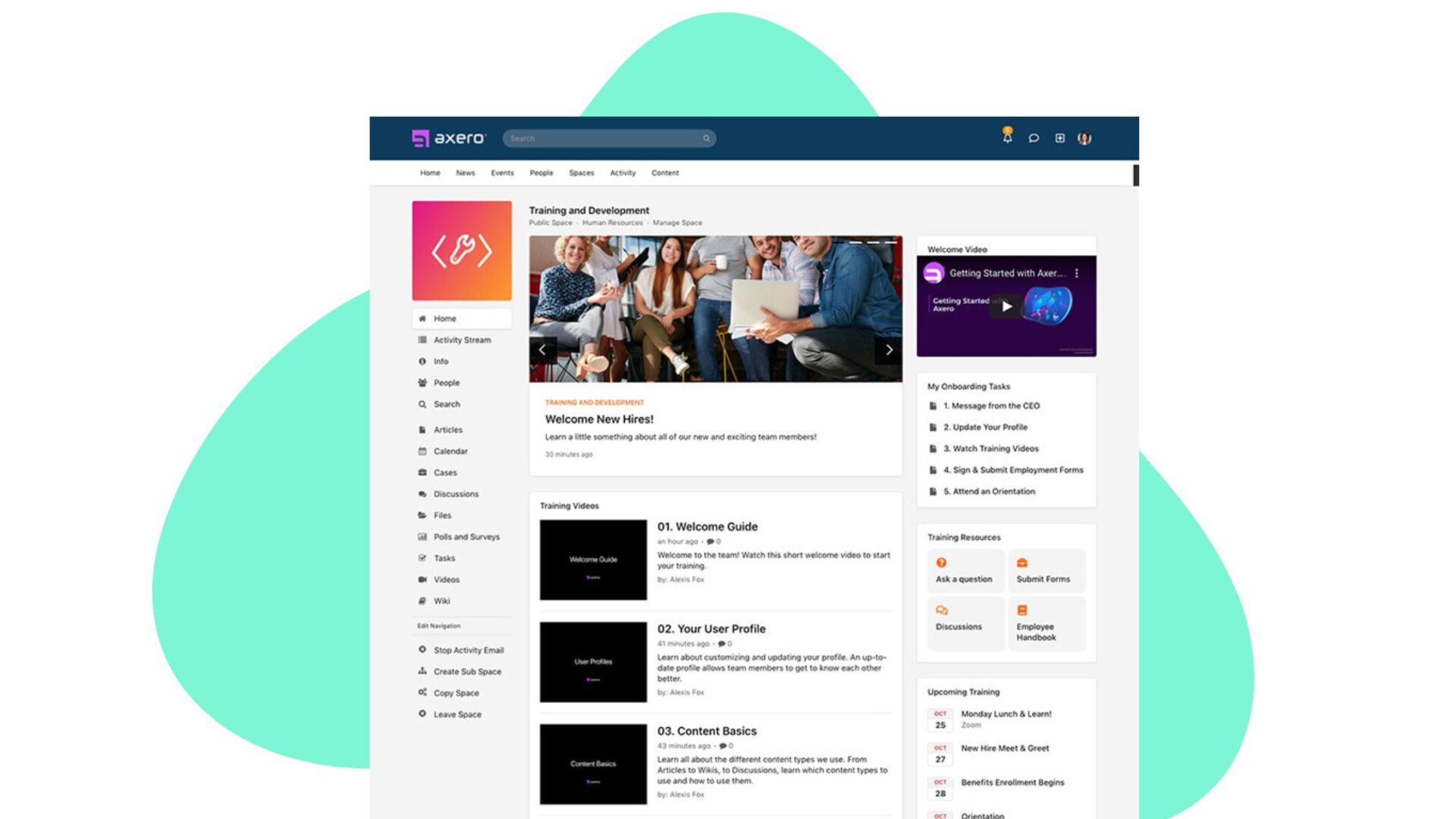
There is probably no other stage in a new hire’s journey more important than their onboarding experience. Effective onboarding helps employees feel welcomed and valued, which boosts engagement and fosters a sense of belonging from the start. Studies show that organizations with a strong onboarding process improve new hire retention by 82% and productivity by over 70%. When new employees are thoroughly onboarded, they are more likely to understand the company’s culture, goals, and their role within the team, which enhances motivation and aligns their work with the organization’s objectives.
4. Encourage communication within teams
Did you know employees who feel their voice is heard are 4.6 times more likely to perform their best work? The role of managers and directors will directly impact employee engagement in a workplace.
When managers communicate openly, employees feel valued and more comfortable sharing their ideas, concerns, and feedback. This transparency builds trust and motivates employees to invest in their work and feel connected to the team’s goals. Open communication also enables managers to provide timely support, clarify expectations, and recognize accomplishments, all of which contribute to an employee’s sense of purpose and job satisfaction.
5. Make your workplace people-centric
In any relationship, people want a human, emotional connection. Employee-centric workplaces capitalize on this by putting people at the center of the culture. There’s usually commonalities in how the organization is structured and what the company’s values are, such as an attention to work life balance, mentorship programs for professional development, and strong communication between managers and teams. A people-centric workplace puts the employee experience first, with the goal of having high engagement, productivity, and retention.
6. Set key performance indicators
One of the best ways to help employees succeed and remain engaged is by telling them what they need to do to get there. Key performance indicators (KPIs) are metrics that measure aspects of an employee’s success and help you, the leader, determine how departments and the organization at large is performing. KPIs hold employees accountable and also help managers be able to spot team members who need extra support to get back on track.
7. Recognize employees
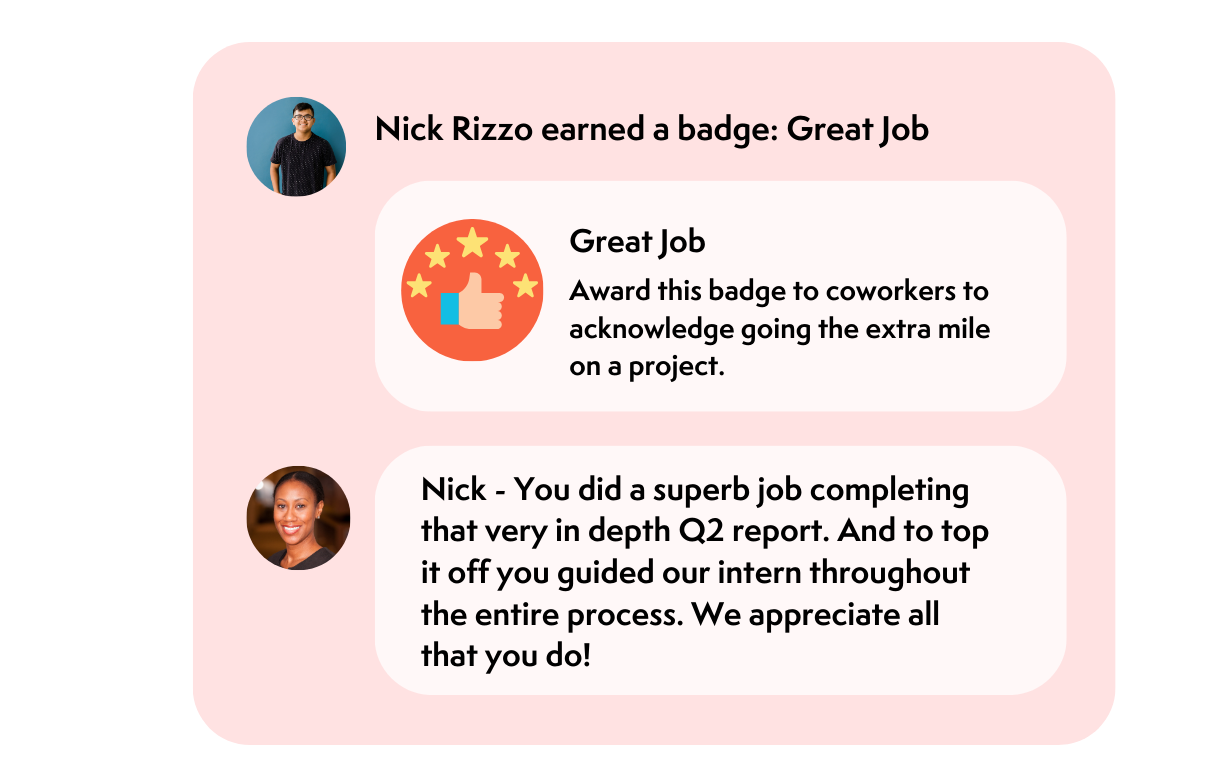
Employee recognition and employee engagement go hand in hand. Employees want to be recognized for a job well done, because when they feel valued and appreciated for their contributions, they are more likely to be motivated, productive, and committed to their roles. Recognition is also an opportunity to reinforce positive behaviors by linking effort with meaningful acknowledgment. Employees who are recognized regularly tend to exhibit higher levels of job satisfaction, loyalty, and enthusiasm, which contribute to reduced turnover rates and improved organizational performance.
A company intranet is a great place to recognize employees because they usually have a suite of recognition features and it’s a place where everyone will see it.
8. Care about the technology
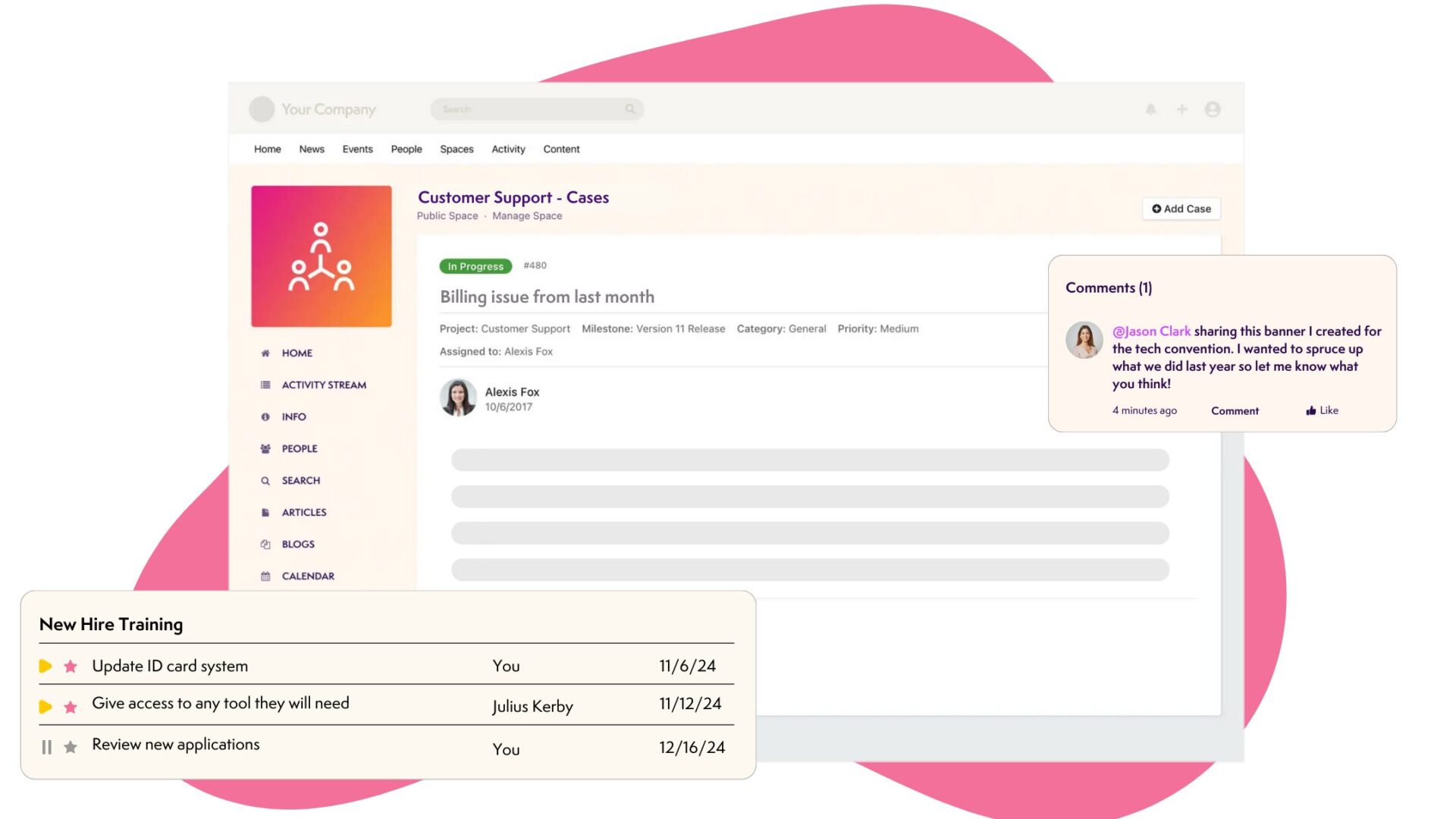
Now more than ever, the technology that people use not only impacts the day to day operations, but it also impacts how engaged employees are. No employee wants to work in an environment that feels outdated—and it starts with the tools and resources that everyone will be relying on to do their jobs.
This is why it’s important to take inventory on what your organization invests in and how effective it is. Can people communicate easily? Are they bombarded with too many platforms and don’t know where to find anything? Do people actively avoid a piece of software because it causes more harm than good? To have an engaged workforce, the technology employees use should make it easy to connect with who and what they need. Otherwise, it adds to disengagement and silos.
9. Hire people who fit your culture
Anyone who hires employees knows how intensive the process can be. But it’s incredibly important. Aside from professional experience, you want to hire the right person who fits into your company culture and has the drive to contribute to your employee engagement efforts. A person’s traits and behaviors is just as important.
When considering new candidates, it’s important to think about how the person you hire will blend into the flow of the company and contribute to the overall engagement. 46% of job seekers cite company culture as very important when choosing a company to apply to. Additionally, organizations with a strong company culture see a 72% lower turnover rate compared to those without one.
10. Provide career paths and employee development
This comes with the territory of leading a company or team: many employees will eventually leave for a different position at a different company. But there’s many who will stay if you give them a reason to.
If you invest in your employee’s careers, they will invest in your company and their jobs. When it comes to career development, here are some best practices for employee engagement:
- Hire within your organization.
- Provide ongoing training to sharpen skills and learn new ones.
- Prioritize productivity and that employees use to do their jobs.
11. Make the workplace autonomous
An autonomous workplace runs under the philosophy that giving employees the freedom to work the way they need to will make the organization more productive and function more efficiently. This could mean switching over to hybrid or remote setups, removing unnecessary hierarchical barriers, or increasing the ability for people to share ideas or take initiatives on projects. The goal is to empower employees to make more decisions on their own, which helps them get more done, while building their confidence to be more satisfied with their job.
12. Don’t confuse “engagement” with “happiness”
Every manager wants their staff to be happy. Happy employees puts you in a more promising spot to have a thriving and engaged workforce. But there is a difference between the two—just because an employee exhibits signs of happiness doesn’t mean he or she is actually engaged in their job. The two are similar and can be connected, yet they are different.
Engagement is directly linked to productivity and efficiency, whereas happiness is an emotion. A happy employee may be all smiles, but an engaged employee is an active power player in the company culture and with their tasks. When you combine the two, happiness will boost morale while empowering proactive teams.
13. Gamify tasks
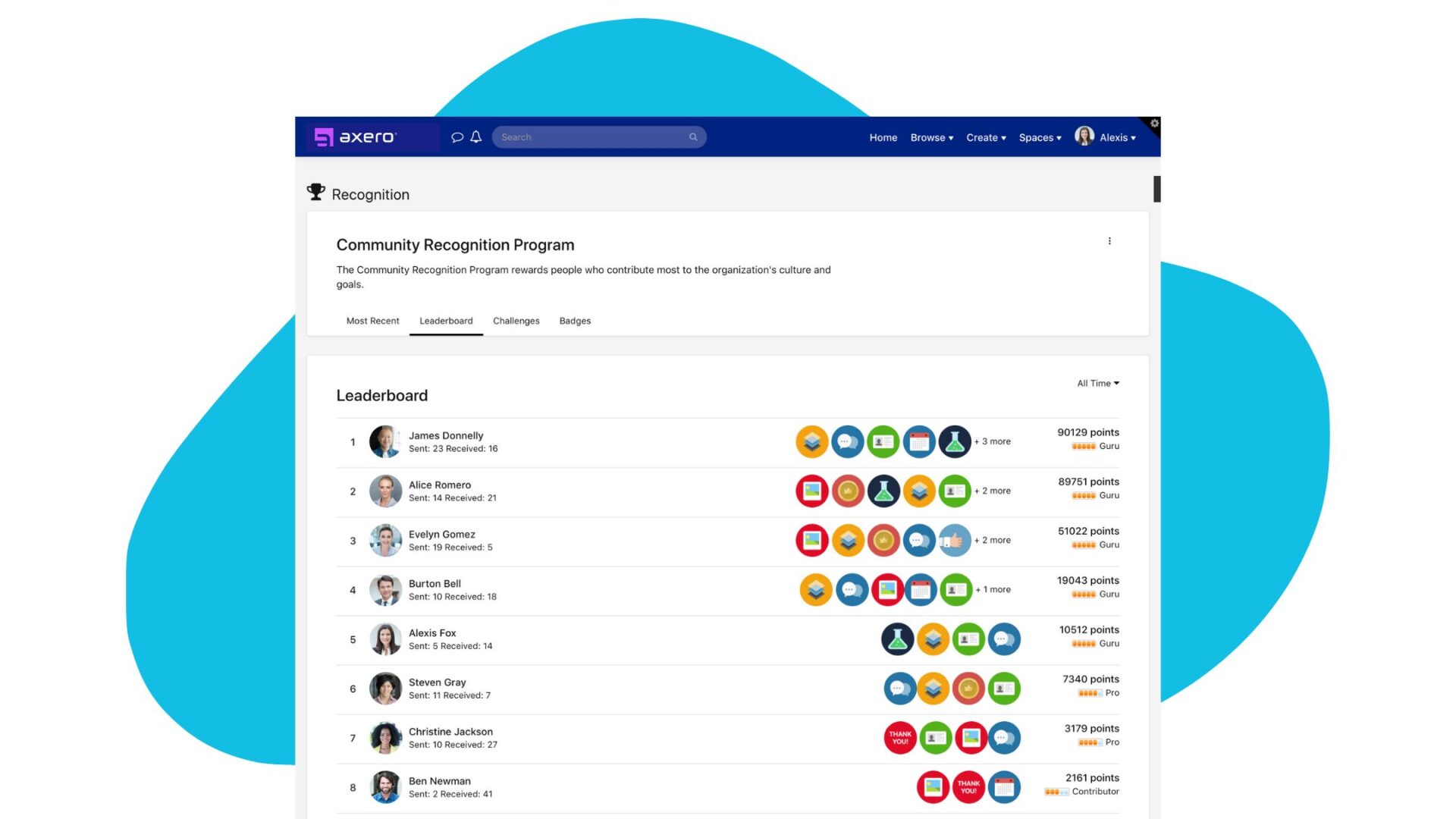
The root of all employee engagement strategies is tapping into the interest of employees. If employees aren’t interested in their work and are just going through the motions, there’s no way they’ll be engaged in any task you give them.
Gamifying actions and tasks when you can help it adds immediate fun and gratification to everyone’s day to day. Gamification enhances engagement by incorporating game-like elements—such as rewards, points, leaderboards, and challenges—into non-game activities. It taps into intrinsic motivators like competition, achievement, and recognition, making tasks more enjoyable and motivating.
14. Encourage collaboration
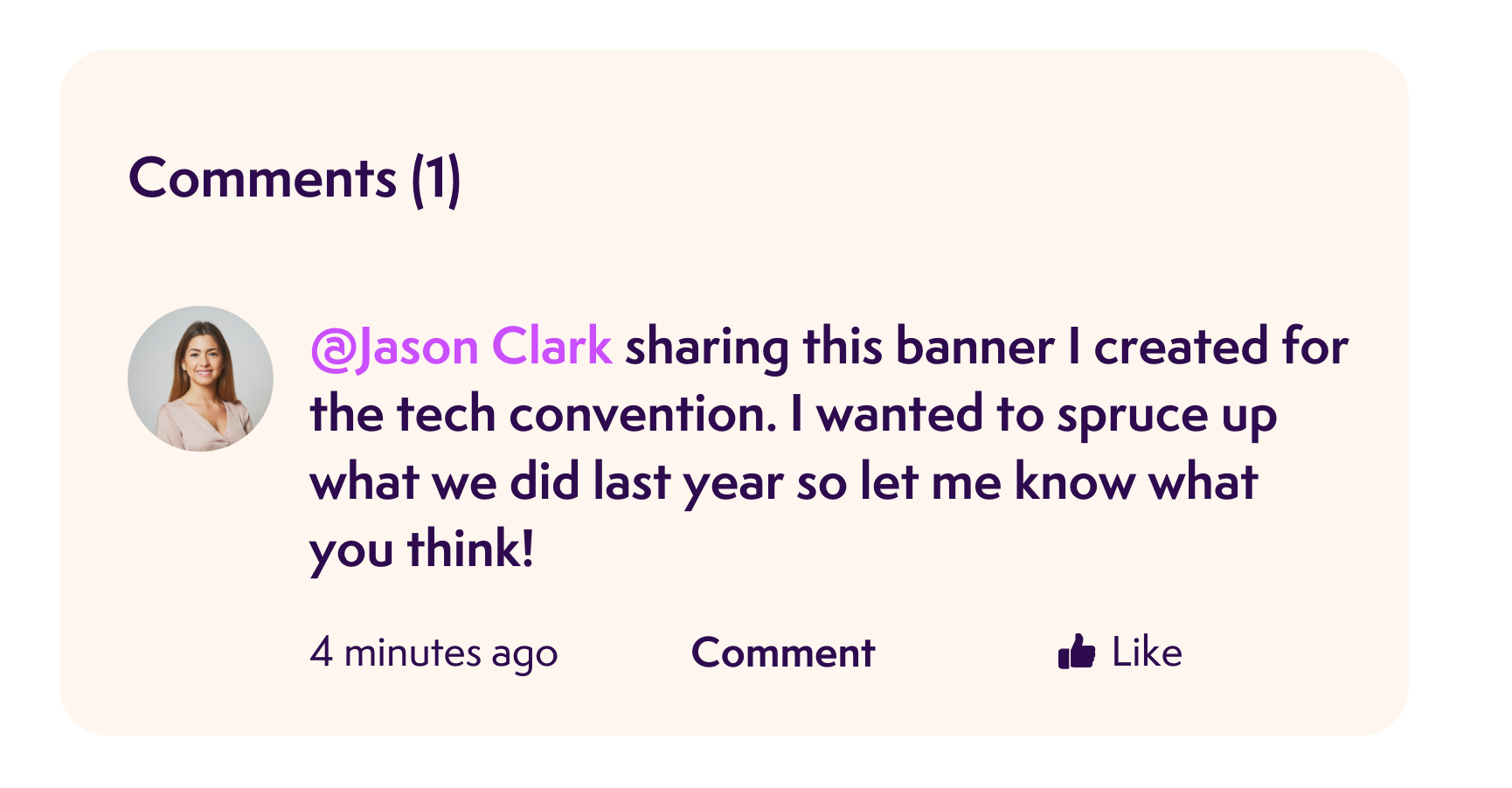
If you want teams to work together more often, encourage it. When it makes sense for the project, assigns tasks to numerous people rather than breaking everything off to individual people. Companies that promote collaborative working environments are five times more likely to be high-performing. Collaboration happens organically, but sometimes a push from management sets it into a pattern.
15. Make engagement a daily focus
To improve employee engagement levels in your organization, you can use an employee engagement tool and make it a daily focus. One of the best employee engagement best practices is to be consistent with your approach and take small steps, rather than reinventing the wheel. Breaking down your goals in a reasonable manner makes your entire employee engagement strategy more attainable and helps employees get on board with changes.
The bottom line

Having strong employee engagement is incredibly beneficial for any organization who wants to improve business performance and the individual contributions of everyone within the company. Improving employee engagement in your company can be a lengthy process, but that doesn’t mean you can’t do it. Pay attention to your progress, devise a plan, and remember to stay positive. If you put in the right amount of effort, you’re sure to see the results you’re looking for.




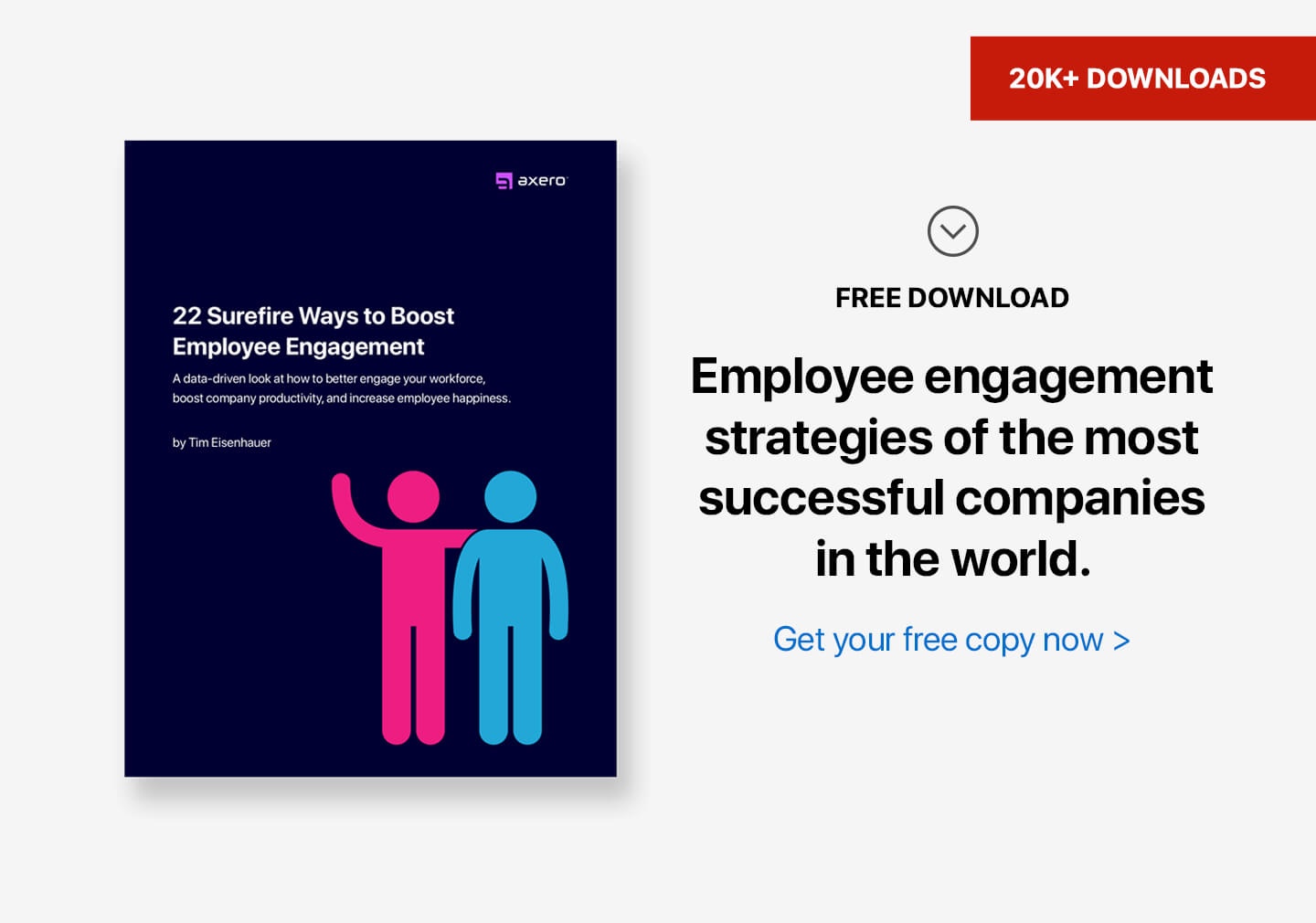










 info@axerosolutions.com
info@axerosolutions.com 1-855-AXERO-55
1-855-AXERO-55


